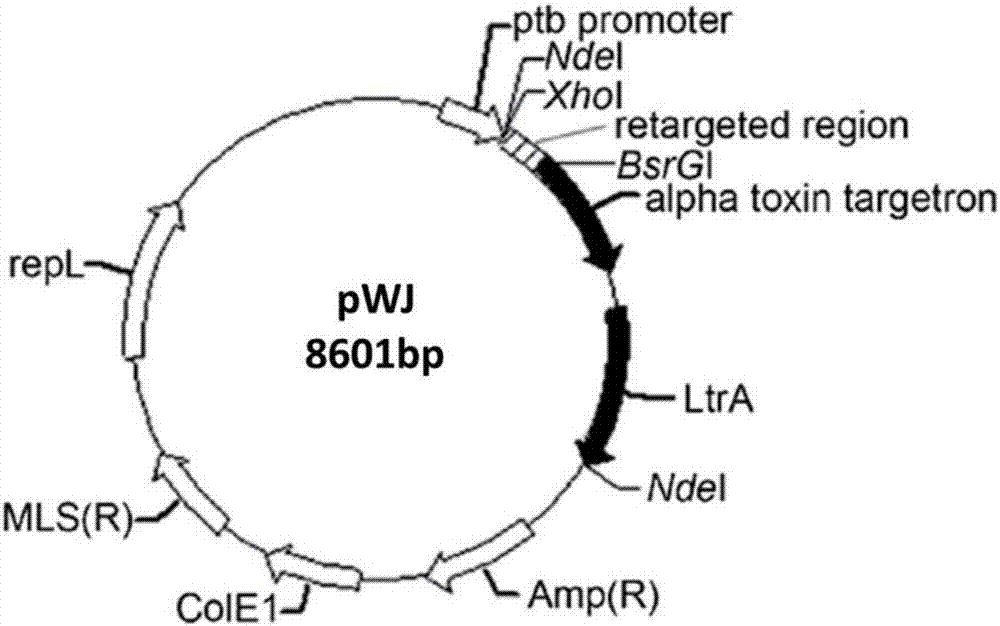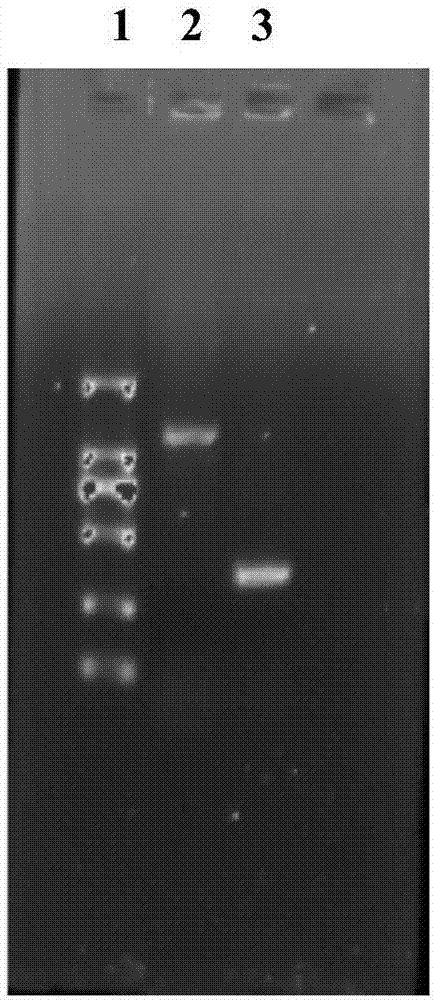Clostridium beijerinckii producing electricity, construction method, and application thereof
A technology of Clostridium beijerinckii and Clostridium beijerinckii, which is applied in the field of improving the electricity production of Clostridium beijerinckii, can solve the problems of weak microbial electricity production ability and unclear specific mechanism, and achieve high-efficiency electricity production and increase electricity production. Effect
- Summary
- Abstract
- Description
- Claims
- Application Information
AI Technical Summary
Problems solved by technology
Method used
Image
Examples
Embodiment 1
[0028] Embodiment 1: Construction method of Clostridium beijerinckii Cbei_2996 gene inactivation mutant
[0029] (1) Design introns:
[0030] According to the Cbei_2996 gene sequence (as shown in SEQ ID No: 1) of Clostridium beijerinckii included in the NCBI database, that is, the base sequence (nuoA) encoding coenzyme Q oxidoreductase subunit A, a suitable insertion gene site is designed with the help of software point( http: / / www.clostron.com ), through the previous experimental screening and verification, it was selected to be inserted between the 62nd and 63rd bases of the Cbei_2996 gene sequence, and an intron sequence was generated. The synthesized intron was S-62, and its sequence was shown as SEQ ID NO: 2.
[0031] (2) Construction of Cbei_2996 insertion inactivation vector:
[0032] Use XhoI and BsrGI to double-enzyme-cut the vector pWJ (provided by Mr. Yang Sheng, Shanghai Academy of Biological Sciences, its sequence is shown in SEQ ID NO: 5, and the plasmid map ...
Embodiment 2
[0044] This example illustrates the electricity production experiment using 1 g / L glucose by Clostridium beijerinckii as an anode catalyst.
[0045] (1) Construction of microbial fuel electricity:
[0046] In this embodiment, a microbial fuel cell using Clostridium beijerinckii to generate electricity as an anode catalyst is established according to existing technologies and methods, as shown in the attached figure 2 As shown, it includes four parts: anode chamber, cathode chamber, proton exchange membrane and external circuit. The anode electrode and cathode electrode are PAN-based graphite soft felt (5×5cm), with titanium wire as the external circuit, the external resistance is 1000Ω, the proton exchange membrane is DuPont NafionN117, and the data collector is Keithley series.
[0047] (2) Culture medium formula:
[0048] YPS seed medium: yeast powder 3g / L, peptone 5g / L, glucose 1g / L, ammonium acetate 2g / L, sodium chloride 3g / L, magnesium sulfate heptahydrate 3g / L, potass...
PUM
 Login to View More
Login to View More Abstract
Description
Claims
Application Information
 Login to View More
Login to View More - R&D
- Intellectual Property
- Life Sciences
- Materials
- Tech Scout
- Unparalleled Data Quality
- Higher Quality Content
- 60% Fewer Hallucinations
Browse by: Latest US Patents, China's latest patents, Technical Efficacy Thesaurus, Application Domain, Technology Topic, Popular Technical Reports.
© 2025 PatSnap. All rights reserved.Legal|Privacy policy|Modern Slavery Act Transparency Statement|Sitemap|About US| Contact US: help@patsnap.com



